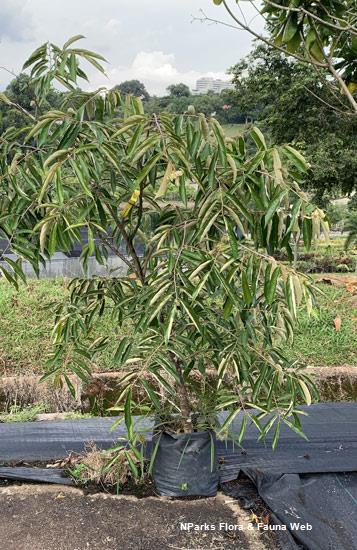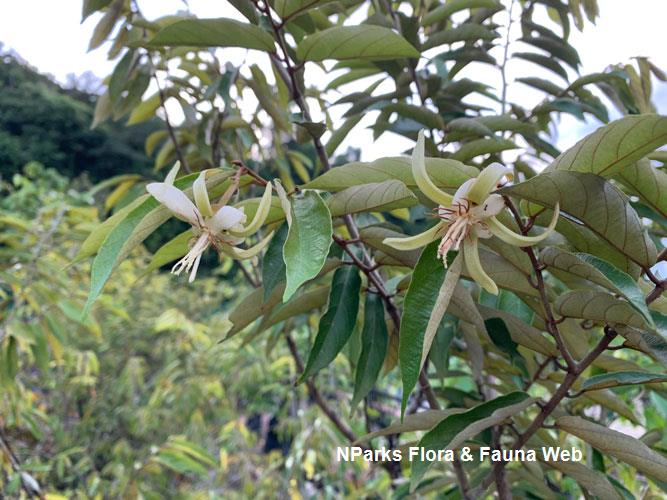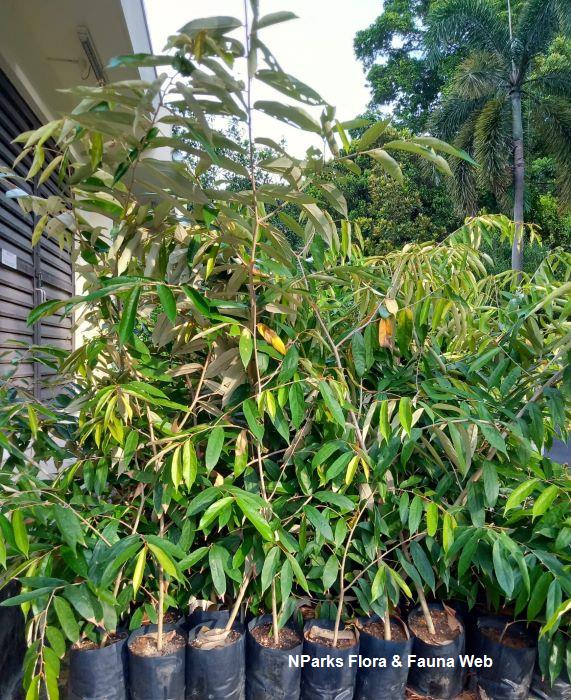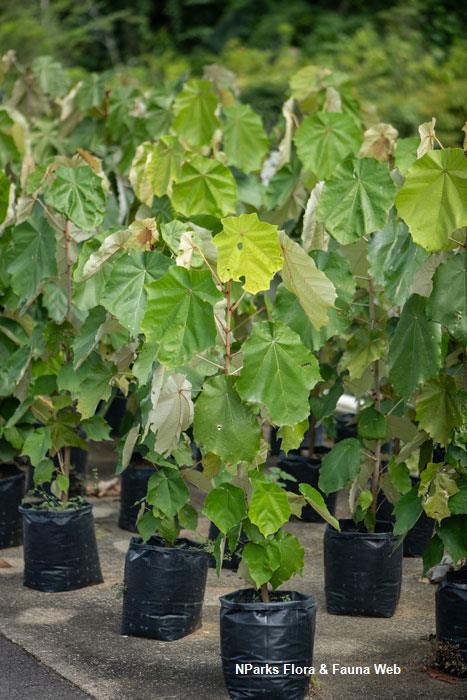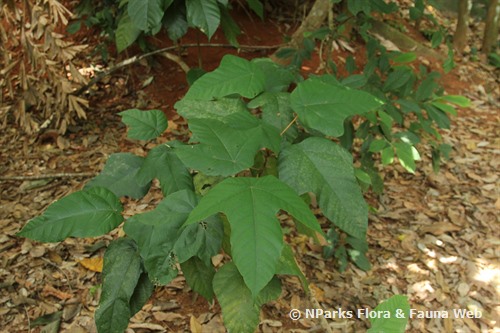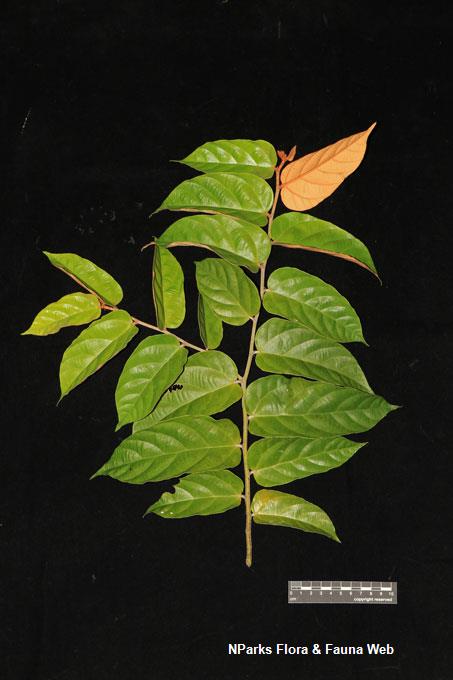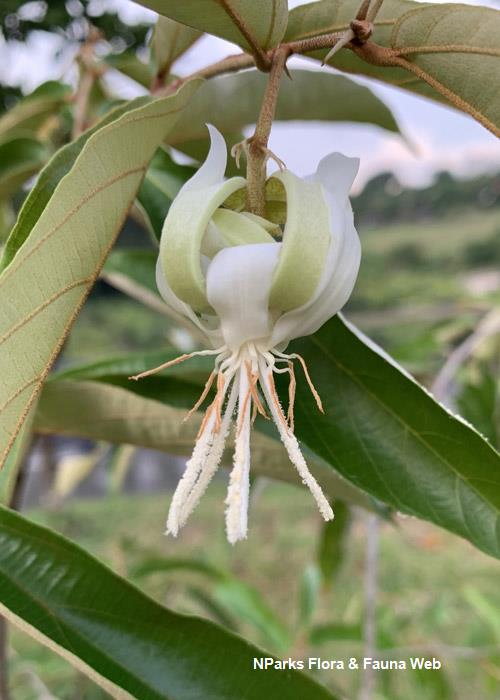
Back
Pterospermum lanceifolium Roxb. ex DC.
| Family Name: | Malvaceae |
| Synonyms: | Pterospermadendron lanceifolium (Roxb. ex DC.) Kuntze |
| Common Name: | 窄叶半枫荷 |
Pterospermum lanceifolium is a tree with fragrant white flowers. The undersides of its leaves are densely covered with yellow-brown or yellow-white velvety short hair, providing a striking contrast and adding a splash of colour to the landscape.
Name
Classifications and Characteristics
| Plant Division | Angiosperms (Flowering Seed Plants) |
|---|---|
| Plant Growth Form | Tree |
| Lifespan (in Singapore) | Perennial |
| Mode of Nutrition | Autotrophic |
| Maximum Height | 25 |
Biogeography
| Native Distribution | From India, Bangladesh to China, Myanmar, Laos, Vietnam, Cambodia and Thailand. |
|---|---|
| Native Habitat | Terrestrial |
| Preferred Climate Zone | Tropical |
| Local Conservation Status | Non-native |
Description and Ethnobotany
| Growth Form | It is a tree, which can reach up to 25 m tall with yellow-brown or gray striate bark. |
|---|---|
| Foliage | Leaves are lanceolate or oblong lanceolate, measuring 5 – 9 cm long and 2 – 3 cm wide. The leaf tip is tapering (acuminate) or sharply pointed (acute). Leaf margin can be entire or with several teeth near the leaf tip. The upper surface of the leaf is hairless (glabrous) while the underside is densely covered with yellow-brown or yellow-white velvety short hair. Juvenile leaves are not lobed unlike other species in the genus. |
| Flowers | Flower occurs in solitary and is borne on a short flower stalk, measuring 3 – 5 cm. It is fragrant and comprises of 5 white coloured petals, numerous stamens and a minutely hairy (puberulent) ovary. |
| Fruit | The fruit is woody, capsular and cylindrical-ovoid, measuring about 5 cm long and 2 cm wide. It splits open at maturity to reveal winged seeds inside. |
| Habitat | It is found in forests, up to 900 m altitude. |
| Associated Fauna | It is pollinated by insects. |
| Etymology | The genus epithet comprises of two parts. pteron, in Greek, means wing while sperma, in Greek, means seed, which refers to the winged seed. The specific epithet lanceifolium, in Latin, possibly refers to the lanceolate shaped leaves. |
| Ethnobotanical Uses | Timber & Products: The timber is used for fuelwood. |
Landscaping Features
| Desirable Plant Features | Ornamental Flowers, Fragrant |
|---|
Fauna, Pollination and Dispersal
| Pollination Method(s) | Biotic (Fauna) |
|---|
Plant Care and Propagation
| Light Preference | Full Sun |
|---|---|
| Water Preference | Moderate Water |
| Plant Growth Rate | Moderate |
Foliar
| Mature Foliage Colour(s) | Green |
|---|---|
| Foliar Type | Simple / Unifoliate |
| Foliar Apex - Tip | Acuminate, Acute |
Non - Foliar and Storage
| Trunk Type (Non Palm) | Woody |
|---|---|
| Root Type | Underground |
Floral (Angiosperm)
| Flower & Plant Sexuality | Bisexual Flowers |
| Flower Colour(s) | Cream / Off-White |
|---|---|
| Flower Grouping | Solitary |
| Flower Location | Axillary |
Fruit, Seed and Spore
| Fruit Type | Dehiscent Dry Fruit |
References
| References | <1> Flora of China. (2007). Pterospermum lanceifolium. Flora of China. http://www.efloras.org/florataxon.aspx?flora_id=2&taxon_id=242342187 (accessed 22 July 2024). |
|---|
Image Repository
Others
| Master ID | 30313 |
|---|---|
| Species ID | 4622 |
| Flora Disclaimer | The information in this website has been compiled from reliable sources, such as reference works on medicinal plants. It is not a substitute for medical advice or treatment and NParks does not purport to provide any medical advice. Readers should always consult his/her physician before using or consuming a plant for medicinal purposes. |

